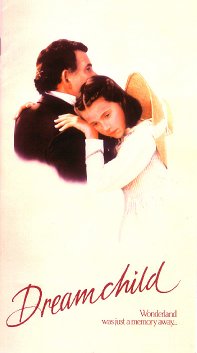
The Dodo is a fictional character appearing in Chapters 2 and 3 of the 1865 book Alice's Adventures in Wonderland by Lewis Carroll. The Dodo is a caricature of the author. A popular but unsubstantiated belief is that Dodgson chose the particular animal to represent himself because of his stammer, and thus would accidentally introduce himself as "Do-do-dodgson".

Alice's Adventures in Wonderland is an 1865 English children's novel by Lewis Carroll, a mathematics don at Oxford University. It details the story of a young girl named Alice who falls through a rabbit hole into a fantasy world of anthropomorphic creatures. It is seen as an example of the literary nonsense genre. The artist John Tenniel provided 42 wood-engraved illustrations for the book.
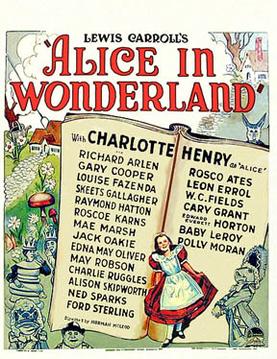
Alice in Wonderland is a 1933 American pre-Code fantasy film adapted from the novels by Lewis Carroll. The film was produced by Paramount Pictures, featuring an all-star cast. It is all live action, except for the Walrus and The Carpenter sequence, which was animated by Harman-Ising Studio.

Alice Pleasance Hargreaves was an English woman who, in her childhood, was an acquaintance and photography subject of Lewis Carroll. One of the stories he told her during a boating trip became the classic 1865 children's novel Alice's Adventures in Wonderland. She shared her name with "Alice", the story's heroine, but scholars disagree about the extent to which the character was based upon her.

Alice in Wonderland is a 1951 American animated musical fantasy comedy film produced by Walt Disney Productions and released by RKO Radio Pictures. It is based on Lewis Carroll's 1865 novel Alice's Adventures in Wonderland and its 1871 sequel Through the Looking-Glass. The production was supervised by Ben Sharpsteen, and was directed by Clyde Geronimi, Wilfred Jackson, and Hamilton Luske. With the voices of Kathryn Beaumont, Ed Wynn, Richard Haydn, Sterling Holloway, Jerry Colonna, Verna Felton, J. Pat O'Malley, Bill Thompson, and Heather Angel, the film follows a young girl Alice who falls down a rabbit hole to enter a nonsensical world Wonderland that is ruled by the Queen of Hearts, while encountering strange creatures, including the Mad Hatter and the Cheshire Cat.
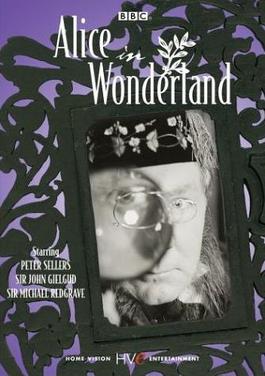
Alice in Wonderland is a 1966 BBC television play, shot on film, based on Lewis Carroll's 1865 book Alice's Adventures in Wonderland. It was adapted, produced and directed by Jonathan Miller, then best known for his appearance in the satirical revue Beyond the Fringe.
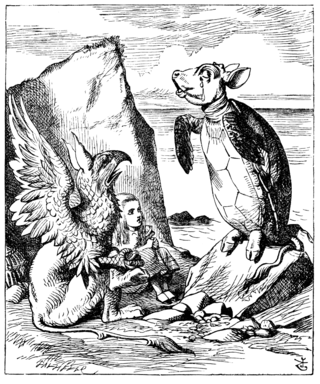
The Mock Turtle is a fictional character devised by Lewis Carroll from his popular 1865 book Alice's Adventures in Wonderland. Its name is taken from a dish that was popular in the Victorian period, mock turtle soup.
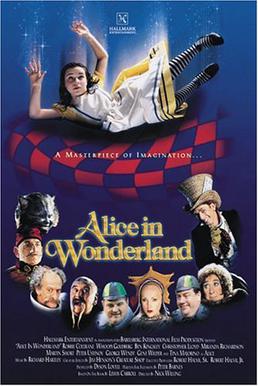
Alice in Wonderland is a 1999 made-for-television film adaptation of Lewis Carroll's books Alice's Adventures in Wonderland (1865) and Through the Looking-Glass (1871). It was first broadcast on NBC and then shown on British television on Channel 4.
Amelia Shankley is a British actress

The Looking Glass Wars is a series of three novels by Frank Beddor, heavily inspired by Lewis Carroll's 1865 novel Alice's Adventures in Wonderland and its 1871 sequel Through the Looking-Glass. The premise is that the two books written by Lewis Carroll are a distortion of the "true story".

Fushigi no Kuni no Alice is an anime adaptation of the 1865 novel Alice's Adventures in Wonderland which ran on the TV Tokyo network and other local stations across Japan from October 10, 1983 to March 26, 1984. The series was a Japanese-German co-production between Nippon Animation, TV Tokyo and Apollo Films. The series consists of 52 episodes, however, only 26 made it to the US.

Alice's Adventures in Wonderland is a 1972 British musical film directed by Australian filmmaker William Sterling, based on Lewis Carroll's 1865 novel of the same name and its 1871 sequel, Through the Looking-Glass. It had a distinguished ensemble cast and a musical score composed by John Barry with lyrics written by Don Black. In addition, make-up artist Stuart Freeborn created film visuals based on the original drawings by John Tenniel from the first edition of the novel.

Alice in Wonderland is a musical by Henry Savile Clarke and Walter Slaughter (music), based on Lewis Carroll's books Alice's Adventures in Wonderland (1865) and Through the Looking-Glass (1871). It debuted at the Prince of Wales's Theatre in the West End on 23 December 1886. Aubrey Hopwood (lyrics) and Walter Slaughter (music) wrote additional songs which were first used for the 1900 revival.

The Gryphon is a fictional character devised by Lewis Carroll in the popular 1865 book Alice's Adventures in Wonderland. True to the conventional view of a griffin, he has the head, talons, and wings of an eagle and the body of a lion.

Alice in Wonderland is a 1949 French film based on Lewis Carroll's 1865 fantasy novel Alice's Adventures in Wonderland. Directed by Dallas Bower, the film stars Carol Marsh as Alice, Stephen Murray as Lewis Carroll, and Raymond Bussières as The Tailor. Most of the Wonderland characters are portrayed by stop-motion animated puppets created by Lou Bunin.

Alice in Wonderland is a 1915 American silent film adaptation of Lewis Carroll's classic 1865 novel, Alice's Adventures in Wonderland, directed and written by W. W. Young and starring Viola Savoy as Alice.
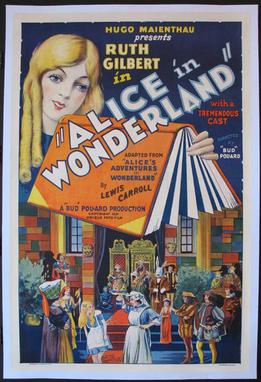
Alice in Wonderland (1931) is an independently made black-and-white Pre-Code American film based on Lewis Carroll's 1865 novel Alice's Adventures in Wonderland, directed by Bud Pollard, produced by Hugo Maienthau, and filmed at Metropolitan Studios in Fort Lee, New Jersey.

Wonderland is the setting for Lewis Carroll's 1865 children's novel Alice's Adventures in Wonderland.
Slayground is a 1983 British crime thriller film directed by Terry Bedford. Starring Peter Coyote, Mel Smith and Billie Whitelaw, the film is adapted from Slayground, the 14th Parker novel, written by Donald E. Westlake under the name Richard Stark.
Alice in Wonderland and Through the Looking-Glass is a 2001 stage adaptation of Lewis Carroll's 1865 novel Alice's Adventures in Wonderland, and the 1871 novel Through the Looking-Glass. It was written by Adrian Mitchell. A 2 hour adaptation of both of Carroll's novels, it holds the distinction for currently being the most comprehensive stage adaptation of the books yet made, with the endings of both novels intact and only minor changes made for theatrical staging reasons.
